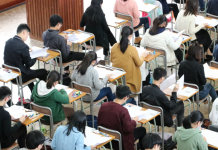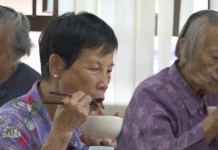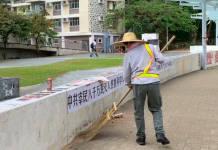Environmentalists lead the way with fresh approach to handle recyclables
Reporters: Jade Li, Kristy Tong, Brianna To, Angela Siu
Editor: Minnie Wong
What happens to household objects that are no longer wanted? Some may be thrown into the rubbish and end up in landfills; paper products such as books may be placed in recycling bins. Now, some community-based green groups are promoting a different way of dealing with rubbish in Hong Kong. They want to turn conventional refuse collection points into community resources sharing centres.
Yuen Long residents can try out this approach for themselves at the weekly ‘Waste-no-mall’ held on Saturdays. Volunteers at the event call themselves “demonstrators” because they say they are creating social change rather than serving participants. The want to change the way people think about rubbish.
“Once the rubbish is brought here, it’s not rubbish anymore,” says Qing Lam, the initiator of Waste-no-mall. “They are resources.”
Waste-no-mall provides a platform where people can pass on resources that are no longer useful to them, such as old toys and books, and redistribute them to people who find them useful. Unlike at conventional refuse stations and recyclables collection points, people can see where their “rubbish” goes. The same goes for any items they pick up at the gathering. It’s a “give and take” concept while the government recycling bins only allow people to “give”.
Joe Tsiu, one of the demonstrators at Waste-no-mall, says the idea is still new to members of the public. People often come and take useful products home, without necessarily recognizing the project’s broader goal – to spread this mode of operation to every refuse collection. Tsiu says it will take time for the message to take root, so he grabs the chance to preach it every Saturday.
Most supporters of Waste-no-mall are local residents. They think it’s a meaningful campaign, one that benefits them and the needy. For some, the reuse of their unwanted items is a welcome alternative to using the government recycling bins. One resident says she doesn’t believe in the government system – she’s seen reports about how outsourced companies end up sending recyclables to landfills.
For its part, the Environment Bureau has been progressively developing Community Green Stations (CGS) in all Hong Kong’s 18 districts to enhance public environmental education and help collect different types of recyclables in local communities. So far five have been launched in Sha Tin, Eastern, Kwun Tong, Yuen Long and Sham Shui Po Districts. The amount of recyclables collected by each CGS is shown below:
| 2016 Q1 | 2016 Q2 | 2016 Q3 | 2016 Q4 | 2017 Q1 | 2017 Q2 | 2017 Q3 | |
| Sha Tin CGS | 70 tonnes | 76.4 tonnes | 81.4 tonnes | 80 tonnes | 93.6 tonnes | 99.6 tonnes | 105.3 tonnes |
| Eastern CGS | 60.3 tonnes | 67.5 tonnes | 84.6 tonnes | 80 tonnes | 109.3 tonnes | 98 tonnes | 91.7 tonnes |
| Kwun Tong CGS | – | – | – | – | 65.2 tonnes | 69.5 tonnes | 75.1 tonnes |
| Yuen Long CGS | – | – | – | – | 42.9 tonnes | 66.9 tonnes | 85.1 tonnes |
(Note: Sham Shui Po CGS commenced its operation in October 2017)
Each station serves the whole district. For example, the Yuen Long station is actually located in Tin Shui Wai, which means it’s not particularly convenient to every resident in the district. The location factor is one of the reasons legislator Eddie Chu Hoi-dick doubts the effectiveness of the CGS scheme. As most residents do not want to see rubbish collection points close to their homes, the stations tend to be a bit removed from the community.
Inspired by the Yuen Long Waste-no-mall, Chu’s team launched the Tsuen-Kwai-Tsing Waste-no-mall in October. To make the idea work, Chu thinks all it takes is a place where people can gather.
“You come here to learn, to meet new people, to participate or to contribute. This is also one way of organizing the community, but this model can only operate if many people take part,” he says.









































